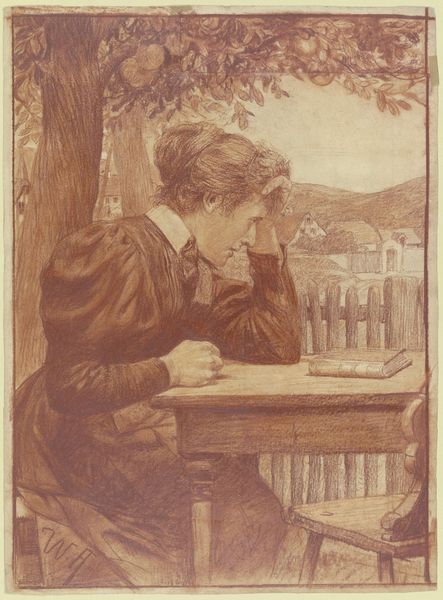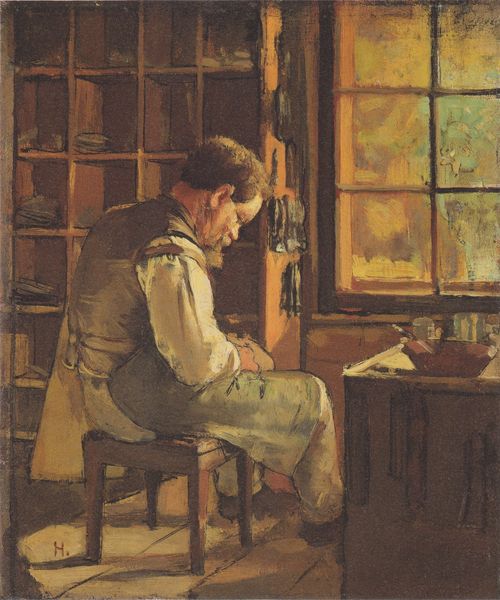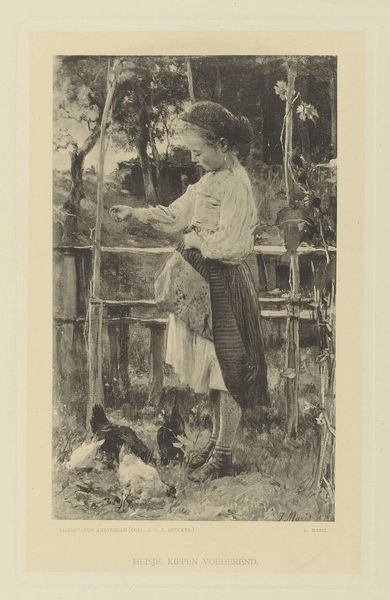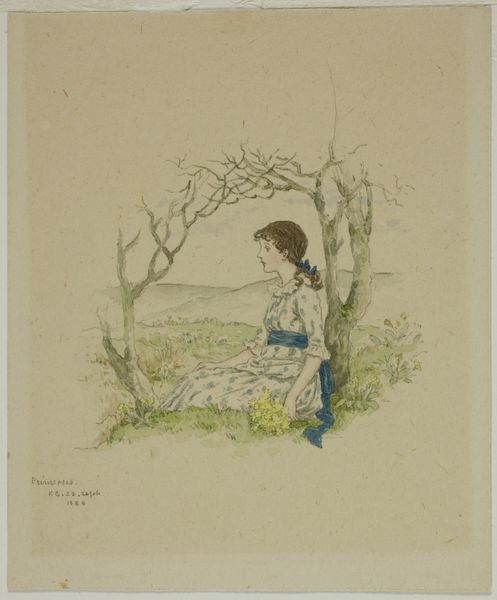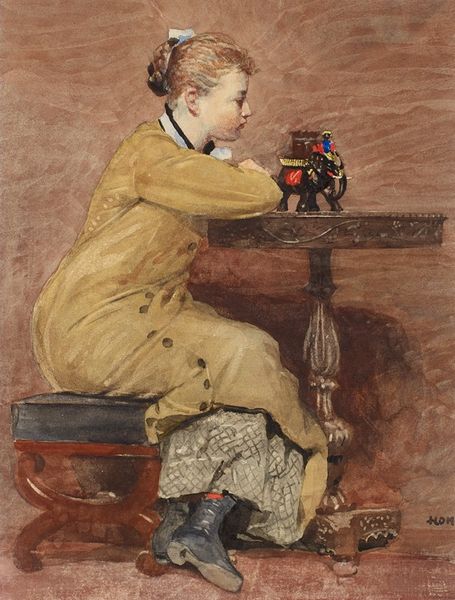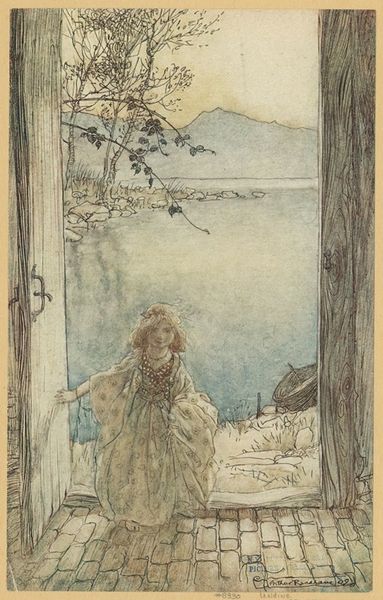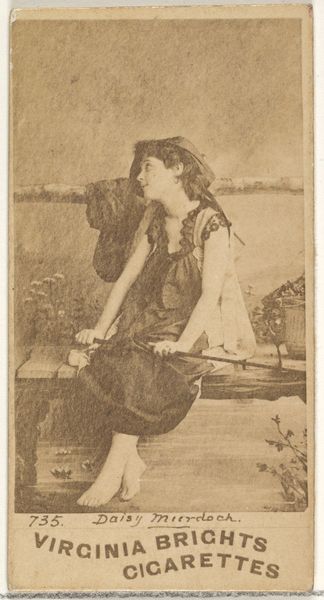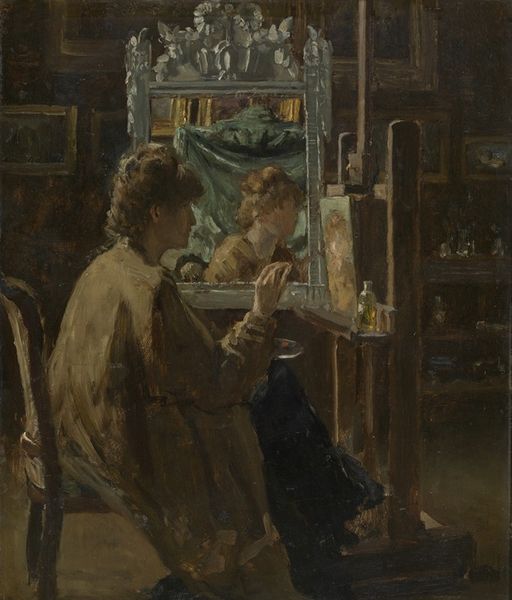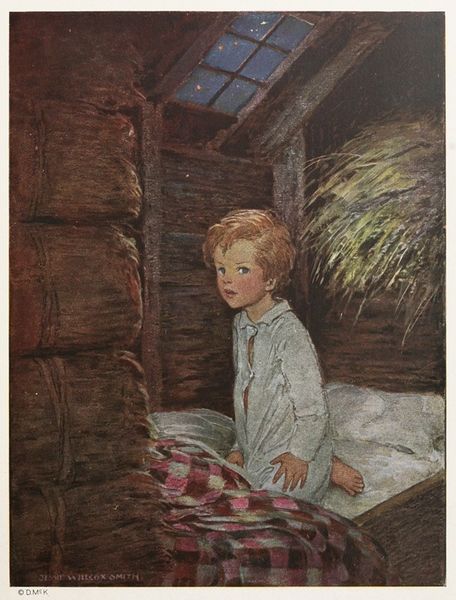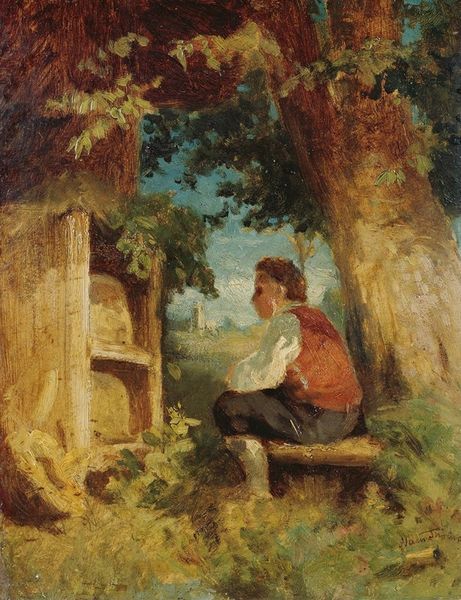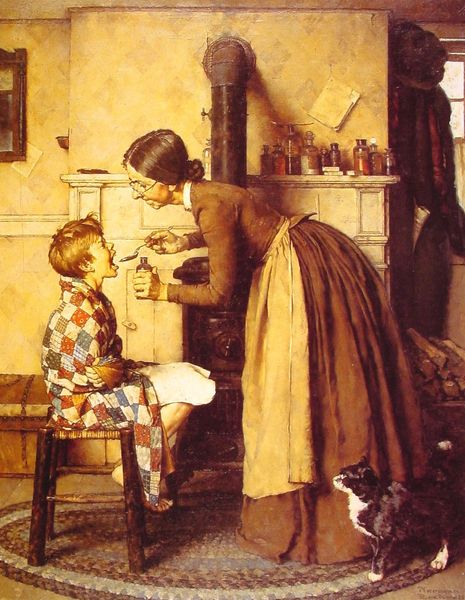
watercolor
#
portrait
#
figurative
#
impressionism
#
oil painting
#
watercolor
#
watercolour illustration
#
northern-renaissance
#
portrait art
#
watercolor
Copyright: Public Domain: Artvee
Curator: Looking at this artwork, titled "Dream Blocks" by Jessie Willcox Smith, I'm immediately drawn to its pensive mood. It's an evocative watercolor piece featuring a child perched on a windowsill, gazing outward. There’s a gentle, almost wistful quality to the scene. Editor: Absolutely, it's easy to read that sense of longing, isn’t it? The artist's focus on childhood, particularly girlhood, resonates within larger social narratives about the sentimental idealization of children during this era. Look at how the open window could be read as symbolic of the limited freedom afforded to young women in certain social contexts, and the outdoors might be suggestive of opportunity beyond the domestic space. Curator: I agree. I think what Smith does well is blend a surface-level sweetness with something deeper, more ambivalent. Smith was prolific as an illustrator during what's come to be known as the Golden Age of American Illustration, but "Dream Blocks" has a particularly haunting effect for me, beyond pure illustration. Editor: Exactly. The alphabet blocks arranged at the child's side spell out the words "LADS DOM," and the rest remains ambiguous. Is it "Lads Dominate"? What are your thoughts on this? It is a commentary about gender? We have to analyze the cultural backdrop against which Smith was producing her art: a period of increasing female empowerment concurrent with anxiety around the shifting patriarchal structures. What were the dominant views on the education of young children, and what role did literature and visual art play in the reinforcement—or subversion—of these dominant narratives? Curator: Fascinating. Beyond that social reading, what also captivates me is the quality of the light—that silvery wash. You get the sense of a very specific time of day and year, even without precise details. Smith manages to make something rather everyday seem quite magical, full of untold possibility and untapped creativity. It is really the subtlety of the palette that gives us all this. Editor: Indeed. We can see the ways in which historical perspectives can offer insights into not just what’s shown in “Dream Blocks," but how those choices connect with issues of gender, agency, and representation within and beyond the picture frame. The work invites us to reflect on what it means to see the world, but also to consider who gets to shape that vision, and under what terms.
Comments
No comments
Be the first to comment and join the conversation on the ultimate creative platform.
